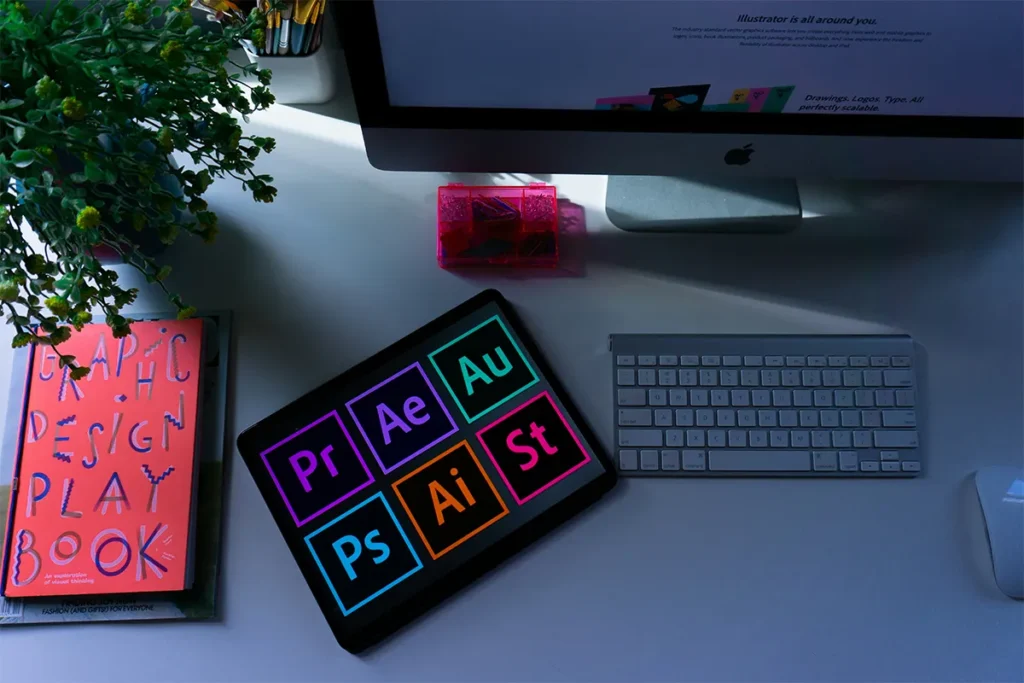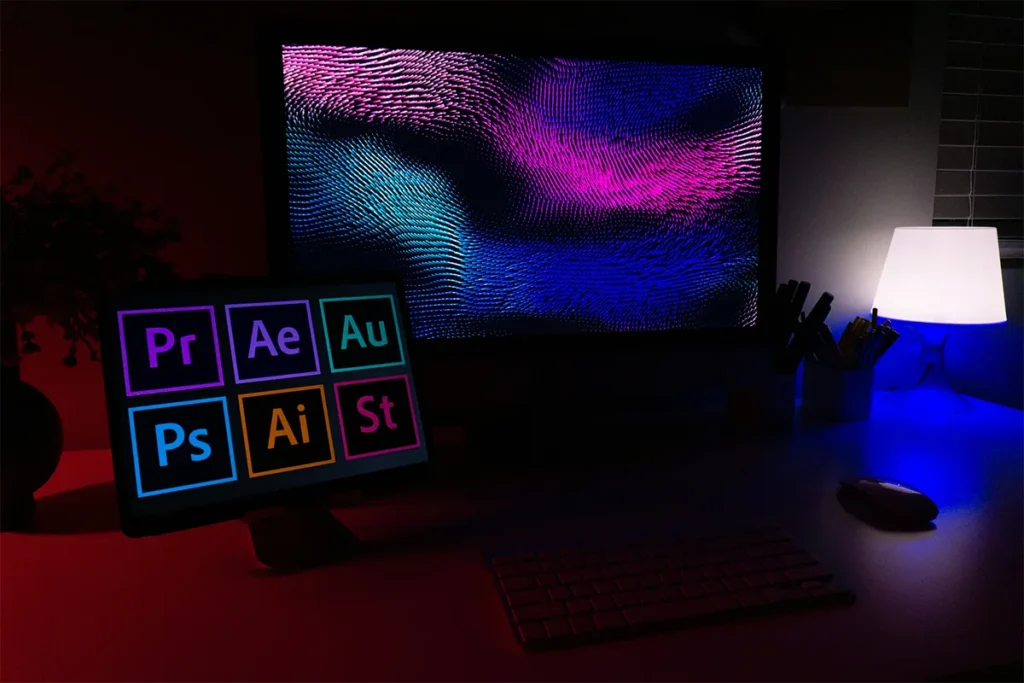Are you a beginner who is in search of starting your career with the right tools, best platforms, an abundance of clients, and credible micro credentials? The micro credentials graphic design is the path that helps you learn core skills, build a small portfolio, and earn a trusted micro-credential certificate fast. Start your journey with a path heading in the right direction. Cut the hardships and pick up one upright way that is destined to succeed.
The industry of graphic design moves fast. From the YouTube automation to TikTok ads, nowadays, employers are picking up the talent that is ready to hit the road and run the workflow as intended. The Micro-credentials in graphic designing equip you with the right skills that are truly meant to kick start a career, instead of long university courses that include useless content that never come into play.
Top 10 Best Micro Credentials Graphic Design Ideas
Strong choices save time and money. Each option here gives practice you can show. Use these notes to match your goals.
1. Graphic Design Specialization
Start by building the core ideas with care. The sequence teaches type, images, layout, and spacing while you learn to judge balance and flow. You move from a small sketch to a full design that feels complete and clean, and you practice giving feedback so your eye improves.
On Coursera, CalArts leads this path with studio tasks and guided critique. By the finish, you hold a set of pieces that look ready for a junior role, and you can talk about your choices in plain words. Learners who want online microcredential graphic design training with honest feedback often choose this route.
Pros:
- Strong foundations with CalArts.
- Peer review builds critique skills.
- Portfolio projects across courses.
- Clear sequence and outcomes.
Cons:
- Time commitment per week.
- A Coursera subscription may apply.
- Peer grading quality can vary.
- Limited advanced typography depth.
2. Adobe Graphic Designer Professional Certificate
For many learners, tools and projects need to grow together. Here you set files for print and web, use non-destructive edits, and keep a tidy workflow that scales to client jobs. You also learn to pass assets between apps without breaking links or styles.
Adobe publishes the content on Coursera and checks progress with tasks that mirror real work. A shareable micro-credential badge signals progress to clients and teams. By the end, you shift smoothly between Photoshop, Illustrator, and InDesign while meeting common specs. That flow supports job-ready graphic design skills for first contracts and entry roles.
Pros:
- Adobe brand increases trust.
- Five courses with real projects.
- Covers Photoshop, Illustrator, and InDesign.
- Includes generative AI content.
Cons:
- A Coursera subscription is often required.
- Not academic credit-bearing.
- Focus on tools over theory.
- Exam fees may be extra.

3. Introduction to Graphic Design Professional Certificate
Beginning feels easier with a steady plan. This track covers form, hierarchy, rhythm, white space, and basic grids so your choices feel deliberate, not random. Short exercises stack into finished pieces that show growth and craft.
LCI Education authorizes this program on edX, and lessons mix rule learning with small creative briefs. The calm pace suits new designers who want a safe start and a small yet real portfolio, matching the goal of a graphic design micro-credentials certificate for beginners.
Pros:
- Beginner-friendly, career-focused.
- Covers core visual principles.
- Structured path with small briefs.
- An edX verified certificate is available.
Cons:
- Limited depth for intermediates.
- Self-paced needs discipline.
- Fewer advanced typography topics.
- Portfolio size may be small.
4. Graphic Design Professional Certificate Programs
Different goals call for different tracks. On edX, you will find several university paths that you can stack by topic. One route leans into branding and identity, while another centers on digital marketing visuals, banners, and simple product graphics.
University teams on edX use clear rubrics and provide steady instructor notes, which keep your work on target. If you might want credit later at select schools, this structure helps you plan ahead and keep momentum. It also fits a university-backed design certificate online plan that grows in small steps.
Pros:
- University-backed, stackable tracks.
- Multiple focus areas to choose from.
- Two to ten-month options.
- Verified certificates on completion.
Cons:
- Quality varies by provider.
- Schedules vary by program.
- Costs differ across schools.
- May require multi-course bundles.
5. Graphic Design Essentials Microcredential
Busy weeks demand focus. This compact microcredential teaches the language of color, type pairing, contrast, alignment, and grid use without extra fluff. You handle images, crop with intent, and place elements so the eye moves with ease.
Okanagan College runs the program with clear weekly tasks and simple reviews. As another field shows, Micro-credentials for early childhood education also focus on clear outcomes and real tasks. In a short window, you build clean starter pieces that feel professional and ready to share. That path supports an affordable graphic design certification online when budget and time matter.
Pros:
- 120 hours, compact format.
- Balances theory and hands-on.
- Covers Adobe basics clearly.
- Good starter portfolio pieces.
Cons:
- Not for advanced learners.
- May require regional enrollment.
- Fixed the schedule in some intakes.
- Software access needed separately.
6. Graphic Design, Photoshop, and Illustrator Micro-credential
Tool skill brings speed and trust. Here, you learn selections, masks, retouching, vector paths, shape tools, and logo cleanup with repeatable steps that save minutes each hour. You also practice export settings so files open correctly on other machines.
Durham College delivers hands-on labs rather than long talks, which keeps you moving. Mini projects prove each new skill and reduce the fear of complex files. Students who seek quick wins often pick this option while searching for short graphic design programs online that deliver real outcomes.
Pros:
- Hands-on labs, project-based.
- Focus on Photoshop and Illustrator.
- Short path to practical skills.
- Clear graduation requirements are listed.
Cons:
- Narrow tool focus only.
- Software licenses add cost.
- Term and GPA requirements.
- Limited theory beyond tools.
7. Graphic Design Microcredential
A broad base can help before you pick a niche. This choice touches design thinking, brand basics, and production specs for both web and print, so you can speak to teams on either side. You test ideas, get feedback, and refine simple systems that make pages read well.
SUNY Dutchess lists a compact program for career changers who want honest progress without heavy theory. A micro-credential for remote jobs shows that you can meet deadlines and work well without constant supervision. The portfolio pieces lead to assistant or junior roles with clear next steps. That flow supports a portfolio-based graphic design course that stays friendly to beginners.
Pros:
- Four courses, twelve credits.
- Covers theory and Adobe apps.
- Term-based structure aids pacing.
- Public SUNY recognition helps.
Cons:
- Location and term constraints.
- Credit tuition costs apply.
- Admission steps may be required.
- Pacing is not fully self-paced.

8. Graphic Design Microcredential
Support services often lift results. Inside Alabama State University, you get deadlines, instructor check-ins, and access to campus sessions like career talks or critique nights. You cover core topics while keeping a steady rhythm of drafts and revisions.
Expect clear grading and practical briefs that map to entry roles. Learners who value name recognition and structure will appreciate this path. The wrap-up certificate signals an industry-recognized design microcredential from a public institution.
Pros:
- Focus on the digital market.
- Open to varied audiences.
- Catalog outlines clear outcomes.
- Public university credibility.
Cons:
- Details depend on the department.
- On-campus services may matter.
- The schedule is set by university terms.
- Limited public project samples.
9. Adobe Illustrator Micro-credential
Vectors power logos, icons, badges, and infographics. This focused program teaches the pen tool, shape building, type on a path, appearance settings, and exports that keep edges crisp in print and on screens. You also learn to plan logo systems that scale.
Humber College often offers small, targeted Illustrator modules with job-like briefs and peer feedback. Fields like data science use short, skills-first certificates to prove tools and project ability quickly. After this, your brand assets look tidy and consistent across files. The format fits a self-paced graphic design microcredential plan you can tuck into tight schedules.
Pros:
- Approximate 30-hour workload.
- Practical vector workflow training.
- Stackable toward the certificate path.
- Offered in a fully online format.
Cons:
- Illustrator only, narrow scope.
- Requires Adobe subscription access.
- No deep branding strategy.
- Dates vary by intake.
10. Print Media and Graphic Design Micro-credential
Print demands care at every step. You learn margin and bleed, color modes, proof checks, packaging nets, and preflight, so press runs go smoothly. Clear dialogue with vendors becomes part of the habit, which protects budgets and timelines.
Raffles University includes real production workflows so your files survive the pressroom and the cutter. You design posters, brochures, and short multi-page pieces that feel finished and strong. Pair this route with software exams to build an Adobe-certified graphic design pathway if you want an extra badge.
Pros:
- Strong print production focus.
- Covers prepress and layout.
- Projects across publication types.
- Stackable micro-credential model.
Cons:
- Print heavy, limited digital.
- Campus and region availability.
- Duration details vary by run.
- Fewer remote vendor simulations.
Smart Selection Guide For Micro Credentials
Picking the right microcredential works best when you know what you want to show. Begin with the portfolio pieces you need for your target role. Then choose the course that builds those pieces on a clear timeline. Microcredentials for Excellence help you set clear goals and turn practice into proof. Keep the plan small and firm so you reach the finish line with strong work.
- Define outcomes first: Choose two or three items you will produce, like a logo set, a poster series, or a social media kit, and let those items guide your course pick.
- Check provider credibility: Seek a known school or platform with named teachers, clear grading, and proof of results through alumni or employer stories.
- Inspect project briefs: Look for public samples and student galleries so you can see the depth and craft before you enroll.
- Confirm assessment style: Prefer graded checkpoints, critique rounds, and chances to revise rather than quizzes only.
- Match time to scope: Count your weekly hours with care and choose a course length you can keep without stress.
- Plan tool practice: Set simple drills in Adobe apps or equivalent tools so your hand skills grow steadily and fast.
- Budget for extras: Add small costs for fonts, mockups, print tests, and exam fees so the total is clear.
A short list brings focus and calm. When you pick with intent, you make steady gains and build trust in your craft. Save each draft, write a note about your choices, and add the best work to your portfolio. This simple rhythm turns lessons into income over time.

Comparison Table: Micro Credentials Graphic Design
| Program | Provider | Platform | Format | Est. Length | Key Focus | Entry level |
|---|---|---|---|---|---|---|
| Graphic Design Specialization | California Institute of the Arts | Coursera | 5-course specialization | About 2 months at 10 hours per week | Foundations, typography, image-making, layout | Beginner to intermediate |
| Adobe Graphic Designer Professional Certificate | Adobe | Coursera | 5-course certificate | About 4 months at 10 hours per week | Adobe apps, portfolio projects, workflow | Beginner to intermediate |
| Introduction to Graphic Design Professional Certificate | LCI Education | edX | Multi-course certificate | Self-paced; short track | Design principles, grids, basic briefs | Beginner |
| Graphic Design Professional Certificate Programs | Various universities | edX | Multi-course certificates | 2 to 10 months | University-backed tracks, stackable | Varies by track |
| Graphic Design Essentials Microcredential | Okanagan College | Okanagan College Online | Microcredential | 120 hours | Core design skills, Adobe basics | Beginner |
| Graphic Design Photoshop and Illustrator Microcredential | Durham College | Durham College PPL | Microcredential | Short, hands-on | Photoshop and Illustrator projects | Beginner |
| Graphic Design Microcredential | SUNY Dutchess | SUNY | 4 courses, 12 credits | Term-based | Design theory, Adobe Creative Cloud | Beginner to intermediate |
| Graphic Design Microcredential | Alabama State University | ASU | Microcredential | Term-based | Applied design skills for the digital market | Beginner to intermediate |
| Adobe Illustrator Microcredential | Humber College | Humber Continuing Professional Learning | Microcredential | About 30 hours | Illustrator essentials, vector workflow | Beginner |
| Print Media and Graphic Design Microcredential | Raffles University | Raffles | Microcredential | Short, stackable | Print layouts, prepress, publication work | Beginner to intermediate |
Conclusion
Micro credentials in graphic design help you spend time on what matters. You practice skills that shape real client work. You also learn how to talk about those choices in plain words. For a wider context on definitions, uses, and limits, see this evidence summary on micro-credentials. That mix lifts both the quality of your designs and the clarity of your process.
While you decide, watch for three strong signs. First, a portfolio rubric that explains what great looks like. Second, class briefs that feel like jobs you might take. Third, a name that hiring teams know, such as CalArts on Coursera, Okanagan College, Durham College, Humber College, Alabama State University, SUNY Dutchess, or Raffles University. With those signs in place, your Micro Credentials Graphic Design path will lead to clear, useful results.
